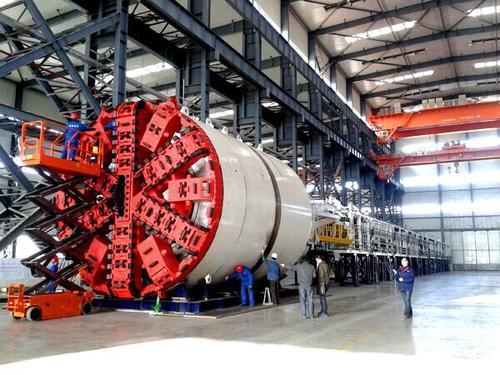BEIJING, Jan. 13 (Xinhua) -- Having successfully navigated the extreme hardship brought by the COVID-19 pandemic in 2020, manufacturers across China are kicking production into high gear to make use of every minute of the new year.
The latest data showed that China's producer price index (PPI), which measures costs for goods at the factory gate, rose 1.1 percent month on month in December, indicating a steady recovery in China's manufacturing sector. Yet, challenges remain ahead amid the capricious epidemic at home and the complicated external environment.
"The opportunities outweigh the challenges," Xiao Yaqing, minister of industry and information technology, told Xinhua in an interview, adding that the fundamentals for the sustained and sound development of China's industrial sector will not change in 2021.
Xiao urged efforts to modernize industrial chains and "crack hard nuts" such as bottlenecks in technological advancement to develop the country into a manufacturing powerhouse.
China has assumed the mantle of the workshop of the world for many years now, driven by its sheer size, complete industrial system and cheap labor force.
As the country pushes forward the transformation of its economic growth model and heads for more efficient and high-quality growth, China aims to move up the value chain to make its manufacturing sector not only big but also smart and tech-savvy.
The digitalization of China's manufacturing industry has seen continuous improvements in recent years, said Fang Xiaoxia, a researcher with the Chinese Academy of Social Sciences.
However, China's digital transformation of its manufacturing sector remains largely in its infancy, such as the use of industrial software, and data mining and utilization at production sites, Fang noted.
To further enhance its manufacturing prowess, China will build more independent and controllable industrial and supply chains, with efforts to achieve breakthroughs in key and core technologies, according to the tone-setting Central Economic Work Conference that took place in December.
The automobile industry, for example, could emerge as a crucial sector for China's industrial upgrading. The country has outlined a roadmap for developing automated vehicles, aiming to achieve scale production of driverless cars of conditional automation by 2025.
China will establish a basic ecosystem for driverless vehicles by 2025, said a document released last year, adding that the system should be continuously improved to build the country's strength in automated vehicles by 2050.
Green industry is another area that China is hoping to build on its advantages. To ensure green growth of the automobile sector, China unveiled a development plan for its new energy vehicle industry for the 2021-2035 period. By 2035, purely electric automobiles are likely to dominate new purchases, while vehicles used in public transportation will be exclusively electrified, according to the plan.
Digital transformation of China's industrial sector has also accelerated during the epidemic. The boom of the online economy amid the epidemic-induced lockdowns has shifted many companies' traditional practices such as office meetings and marketing online.
China's digital infrastructure also saw notable achievements, with a total of 580,000 5G base stations built last year and 600,000 more to be added to the network in 2021.
The country vows more breakthroughs for the industrial application of 5G technology, with over 1,100 projects on the integration of 5G and industrial internet under construction, covering key fields such as raw materials, equipment manufacturing and consumer goods.
Apart from promoting technological advancement domestically, China also encourages foreign firms to engage in the country's industrial upgrading.
In December 2020, China released a revised industrial catalog, opening up more sectors for foreign investors. Scheduled to take effect on Jan. 27, 2021, the new catalog encourages more foreign capital to pump into high-end manufacturing such as artificial intelligence, integrated circuits and new material.
Opening up cutting-edge sectors not only creates more opportunities for foreign investors but also brings strategic factors such as talent, technology and capital to China, which will contribute to the establishment of the new development paradigm, said Zhao Ping, a researcher with the China Council for the Promotion of International Trade. Enditem




 A single purchase
A single purchase









